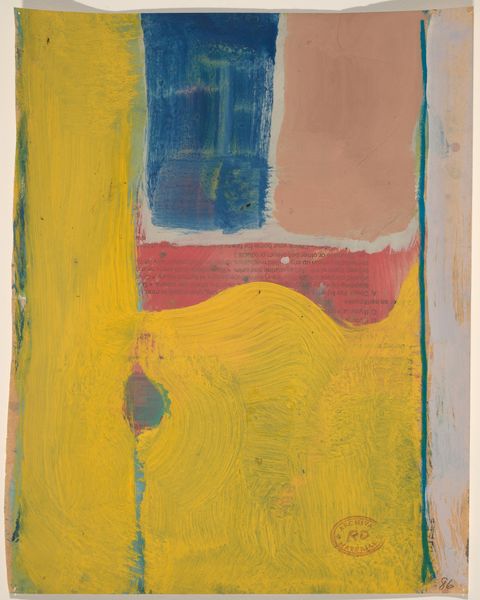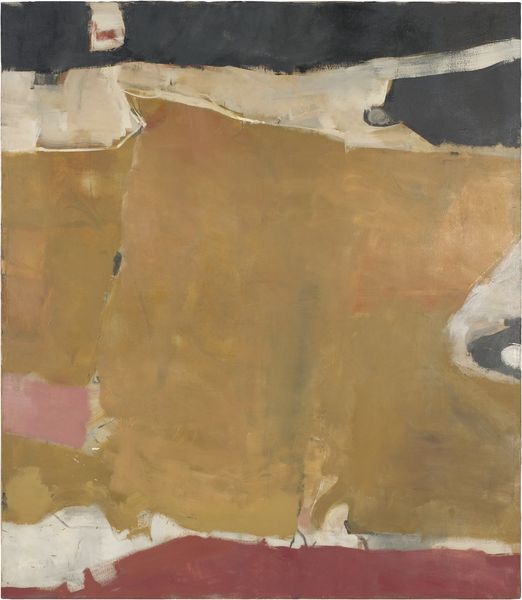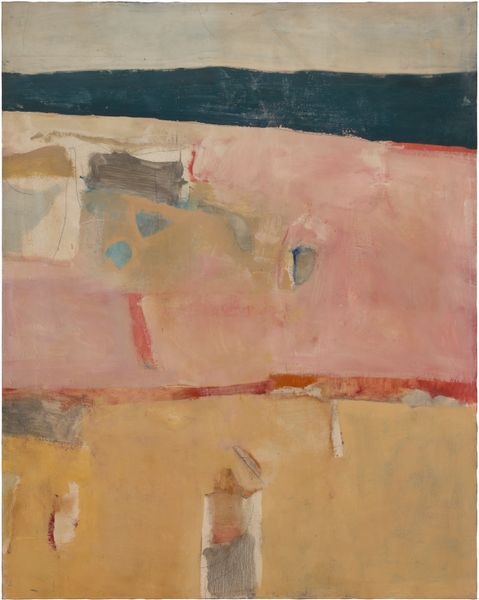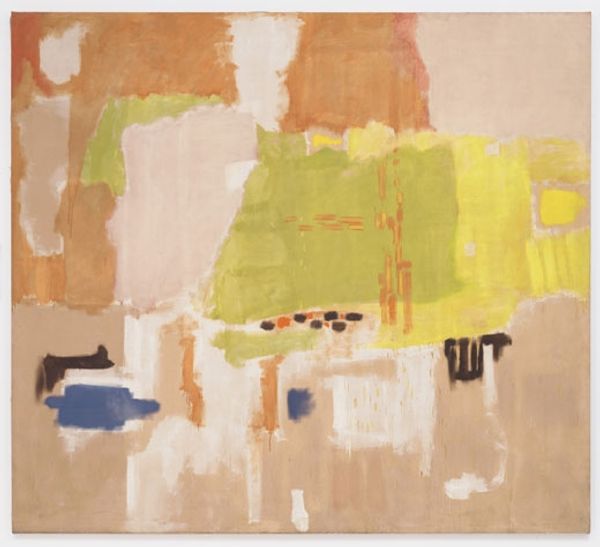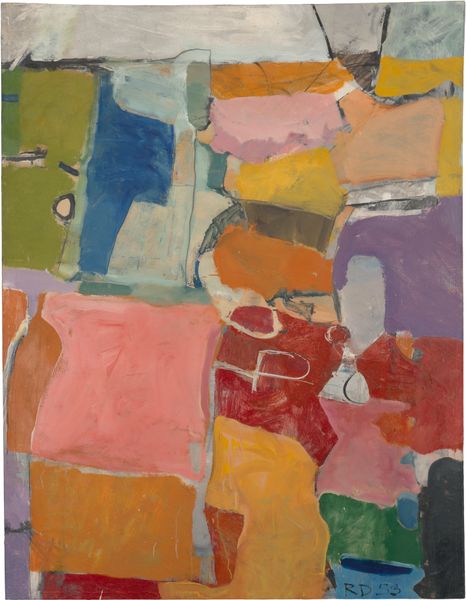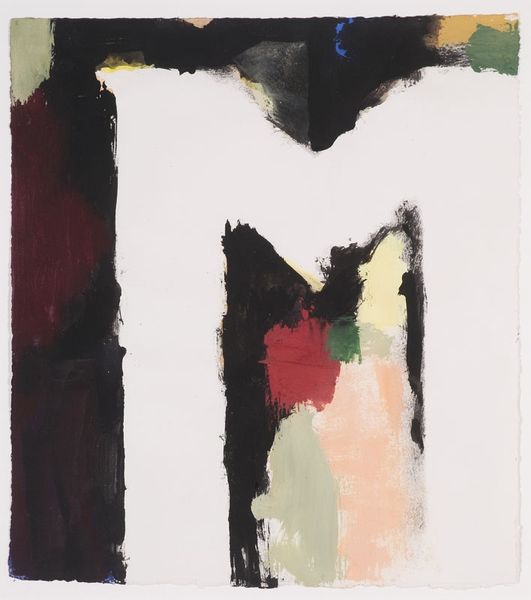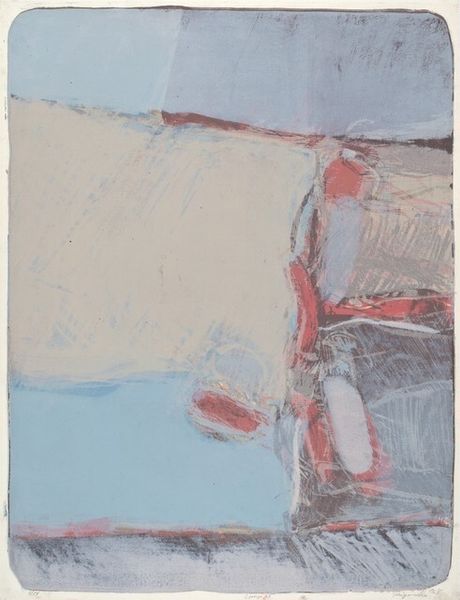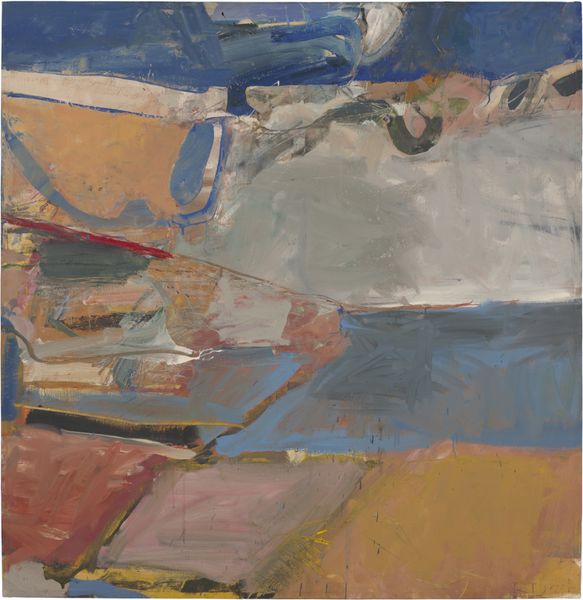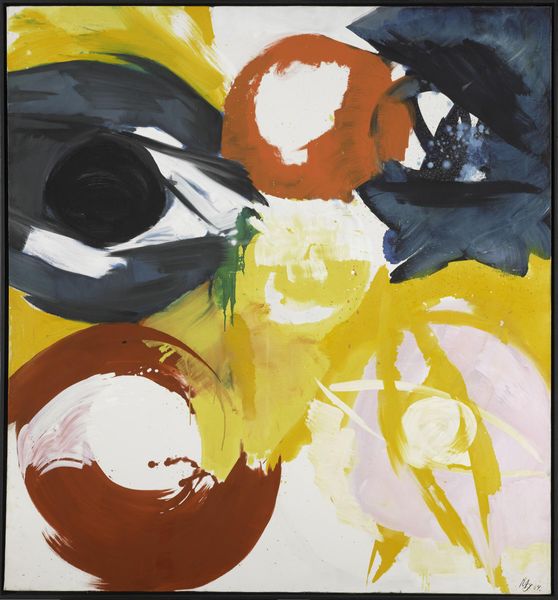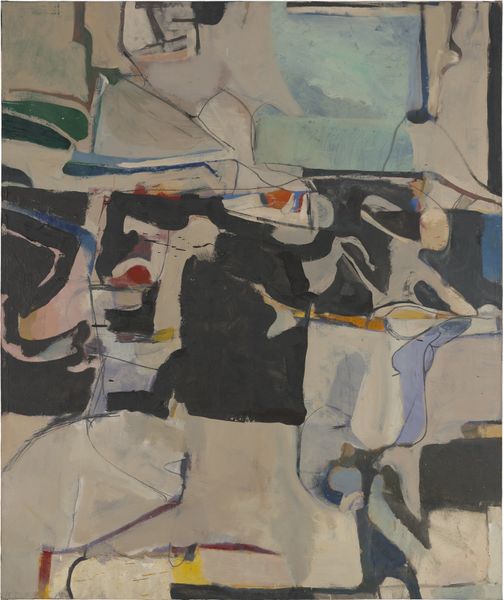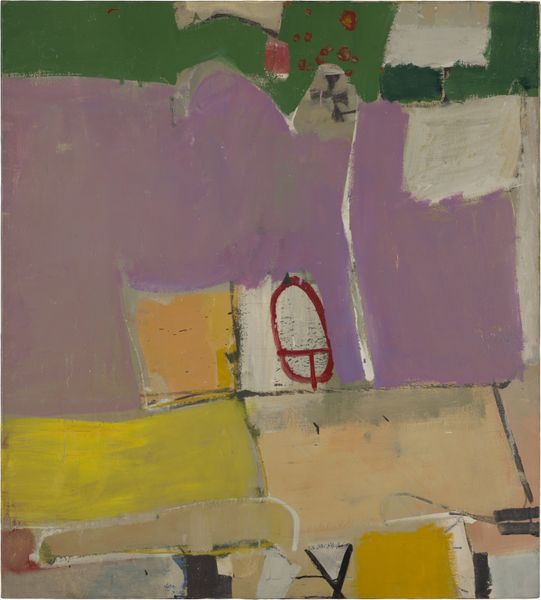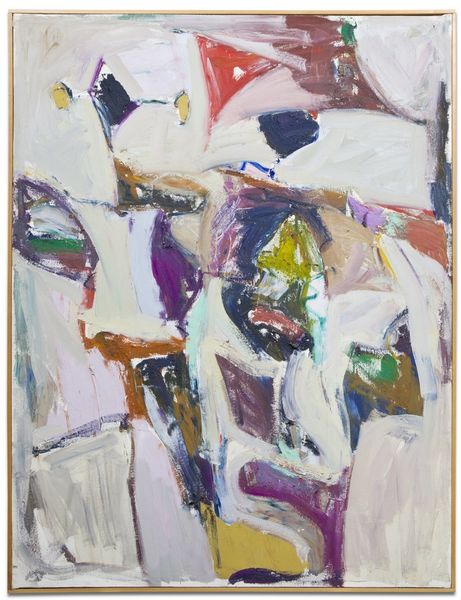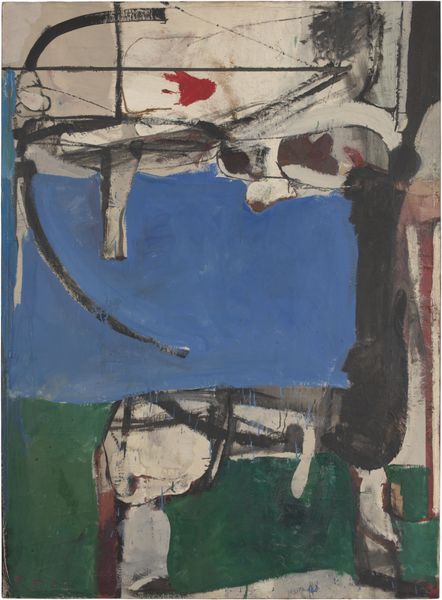
oil-paint
#
abstract-expressionism
#
abstract painting
#
oil-paint
#
landscape
#
oil painting
#
bay-area-figurative-movement
#
abstraction
Dimensions: 175.9 x 116.8 cm
Copyright: Richard Diebenkorn Foundation
Curator: Richard Diebenkorn's "Albuquerque #9," rendered in oil paint in 1952, presents a fascinating example of abstract expressionism that flirts with landscape. What's your initial reaction to this piece? Editor: I'm struck by the tension. It feels like a hazy memory of a place, maybe even a melancholic one. The colors are muted, but the forms suggest a certain solidity. Is this really Albuquerque? Curator: The "Albuquerque" series emerged when Diebenkorn lived there; it represents a pivotal point where his abstract tendencies began incorporating observed reality. Note how his compositions during this period draw heavily on the geographic shapes of the local landscape, but do not explicitly replicate them. The series marked a departure from purely abstract expressionism for him. Editor: Right, I see the ghost of a landscape there now that you mention it. That thick band of black at the top could represent a mesa or mountain range. But also, those blues and muted reds resonate with a particular southwestern aesthetic, an archetypal visual lexicon if you will. Was this intended? Curator: Intention is tricky to determine definitively. Diebenkorn himself avoided over-intellectualizing his process, preferring to let the painting evolve. But he was undoubtedly aware of the visual language surrounding him and of the art movements gaining ground, such as Color Field Painting. The painting's aesthetic places the artwork in the postwar American milieu of rising anxiety while enjoying a new and distinct cultural power. Editor: So, perhaps the landscape serves more as a framework or container for those emotions. The blocks of color aren't just about representing physical space but about evoking a specific mood related to place? It’s almost like mapping feelings onto an abstracted environment. Curator: Precisely. And in doing so, Diebenkorn's painting asks questions about art's position during an interesting point of time, but without necessarily intending to do so in a prescriptive, or agenda-driven way. Editor: So much comes alive when you realize this abstract expressionist approach captures echoes of an entire region in ways beyond just a simple surface view of scenery. Curator: Indeed, an approach that allowed Diebenkorn, as a landscape artist and member of a burgeoning, more self-assured American art market, to suggest the cultural identity-building inherent in the region's aesthetics.
Comments
No comments
Be the first to comment and join the conversation on the ultimate creative platform.
